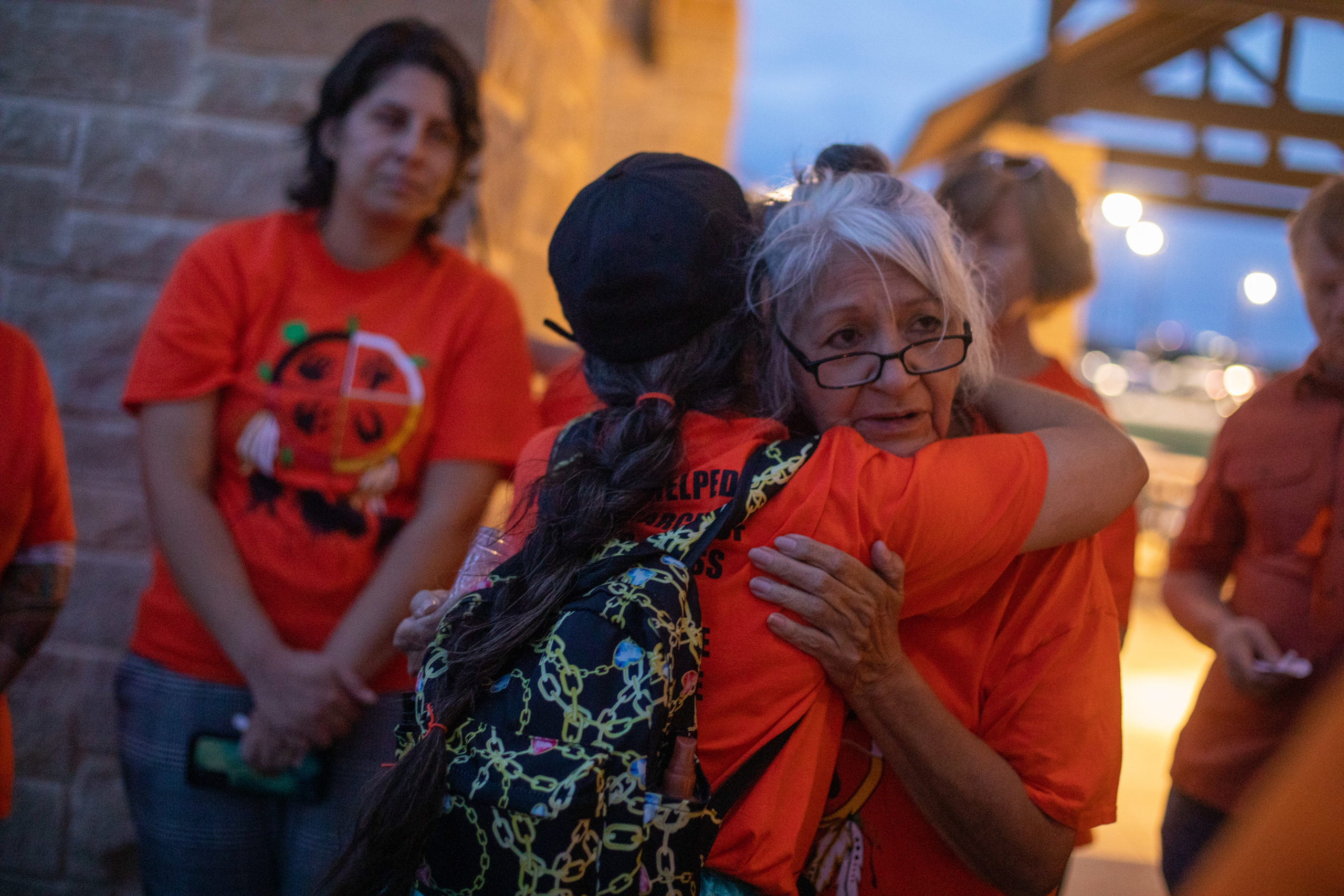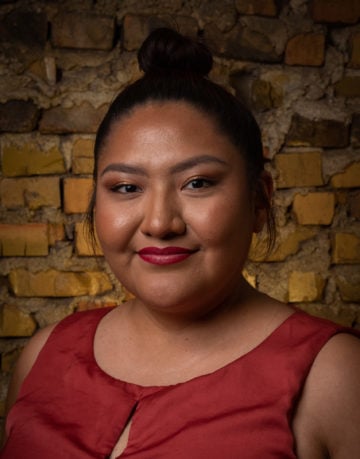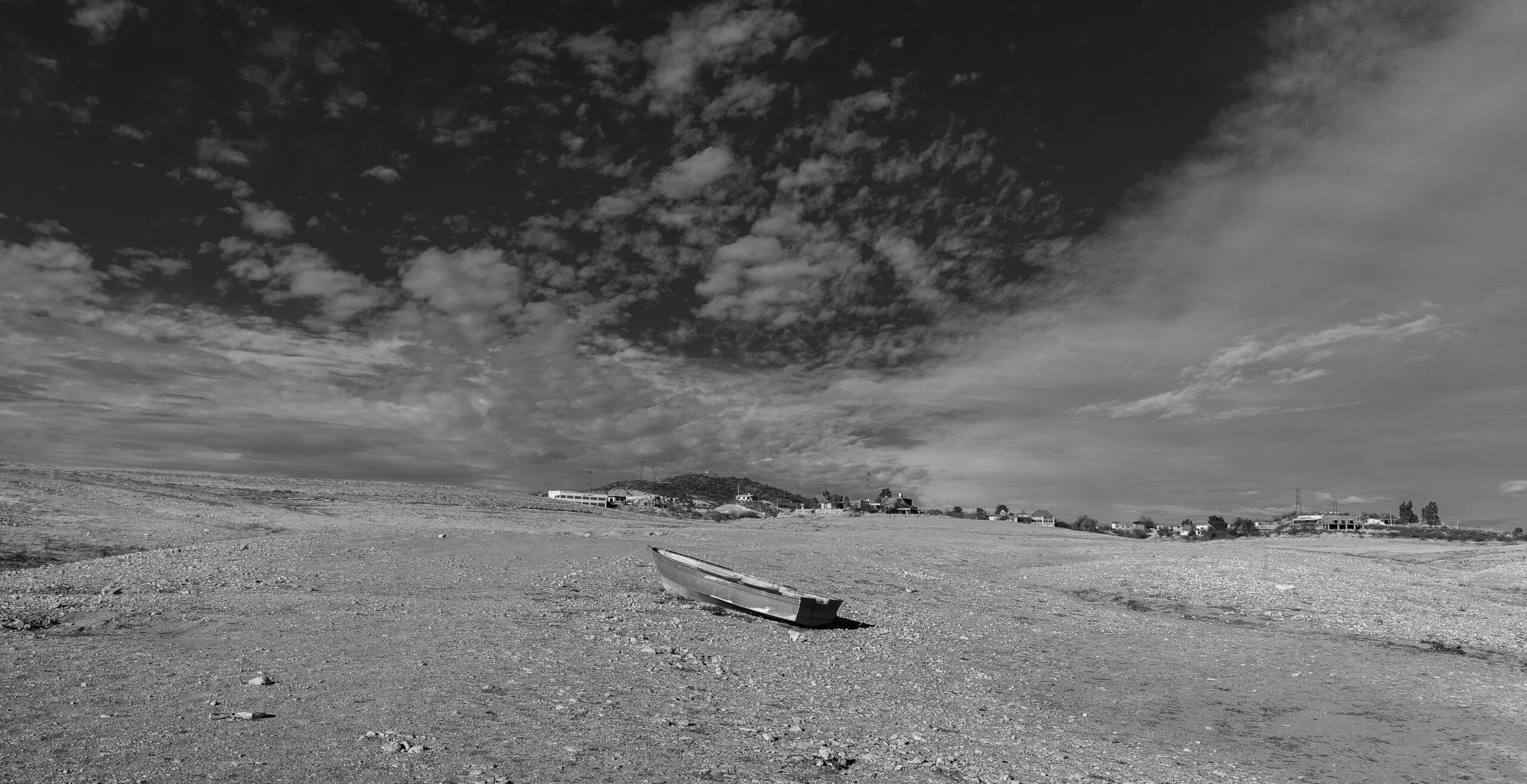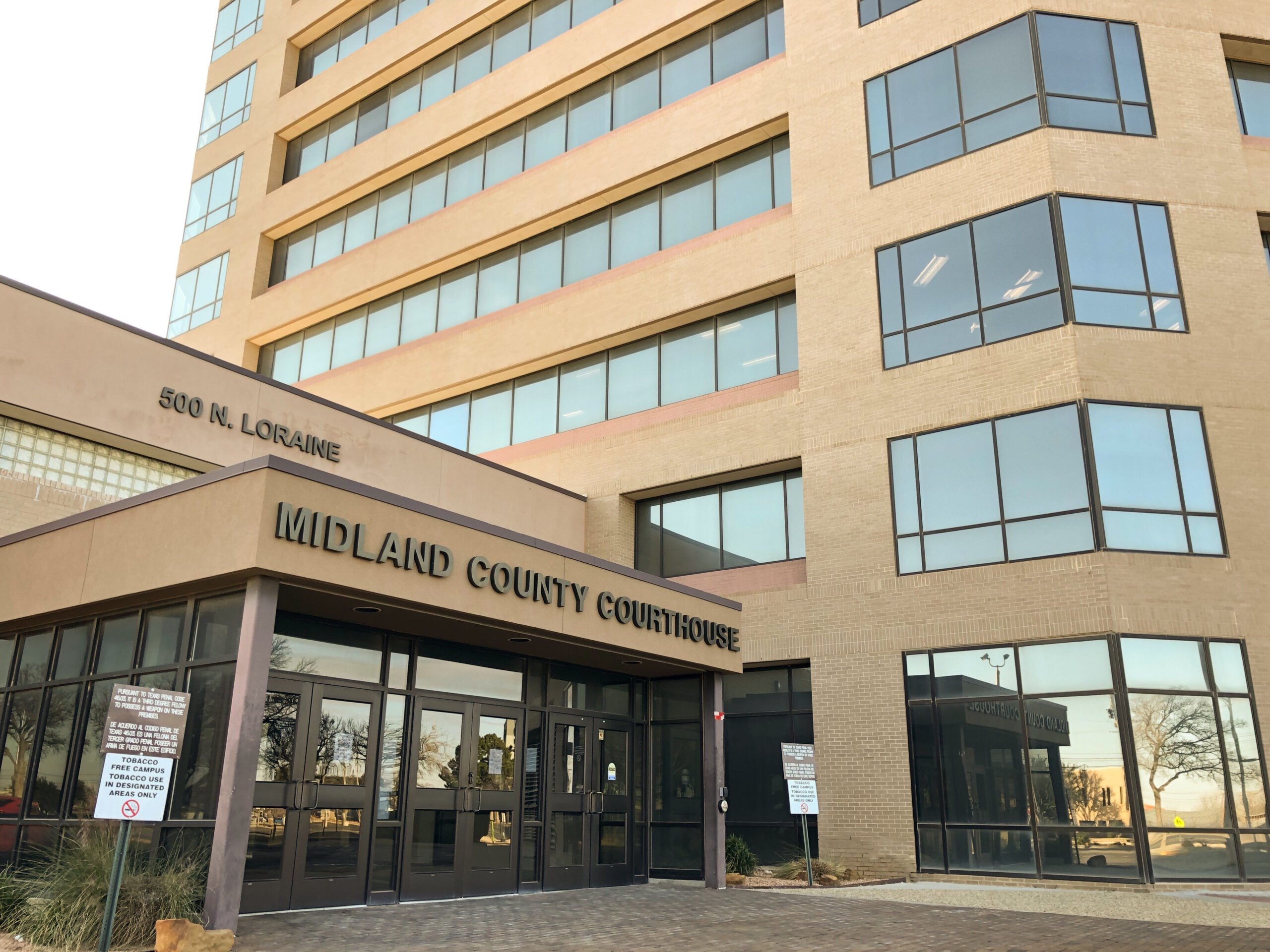Photographs by Keren Carrión
In the 1860s, as part of United States federal Indian policy, Indigenous children were taken from their communities and placed in government, or Church-run boarding schools. The goal was to strip those children of their language and culture in order to become white. A similar program was also implemented in Canada.
Children taken to these schools were subjected to horrific abuse and violence; it’s estimated that thousands of Indigenous children from communities across North America died in those boarding schools. Those that survived often brought trauma home with them and passed it to their children.
The federal government and various Christian denominations operated more than 360 boarding schools in the United States. In Canada, there were 140 federally run residential schools. The United Nations’ Convention on the Prevention and Punishment of the Crime of Genocide, defines genocide by five specific acts, including “forcibly transferring children of the group to another group.”
In 2020, Canada declared September 30 as the National Day for Truth and Reconciliation, meant to honor “the lost children and Survivors of residential schools, their families, and communities.” First introduced in 2017, the bill that designated the holiday didn’t passuntil June of this year, a few days after the discovery of the 215 unmarked, undocumented graves of Indigenous children at the Kamloops Indian Residential School in Canada. Since then, hundreds more graves have been discovered at other schools. In the wake of these discoveries, U.S. Department of Interior Secretary Deb Haaland announced a federal initiative to uncover similar mass graves and clandestine burial sites in the United States.
For Canada’s National Day for Truth and Reconciliation, Indigenous communities and allies across the Americas commemorated the day with marches and other events. In Plano, Indigenous people came together for a remembrance and vigil for victims of boarding schools.
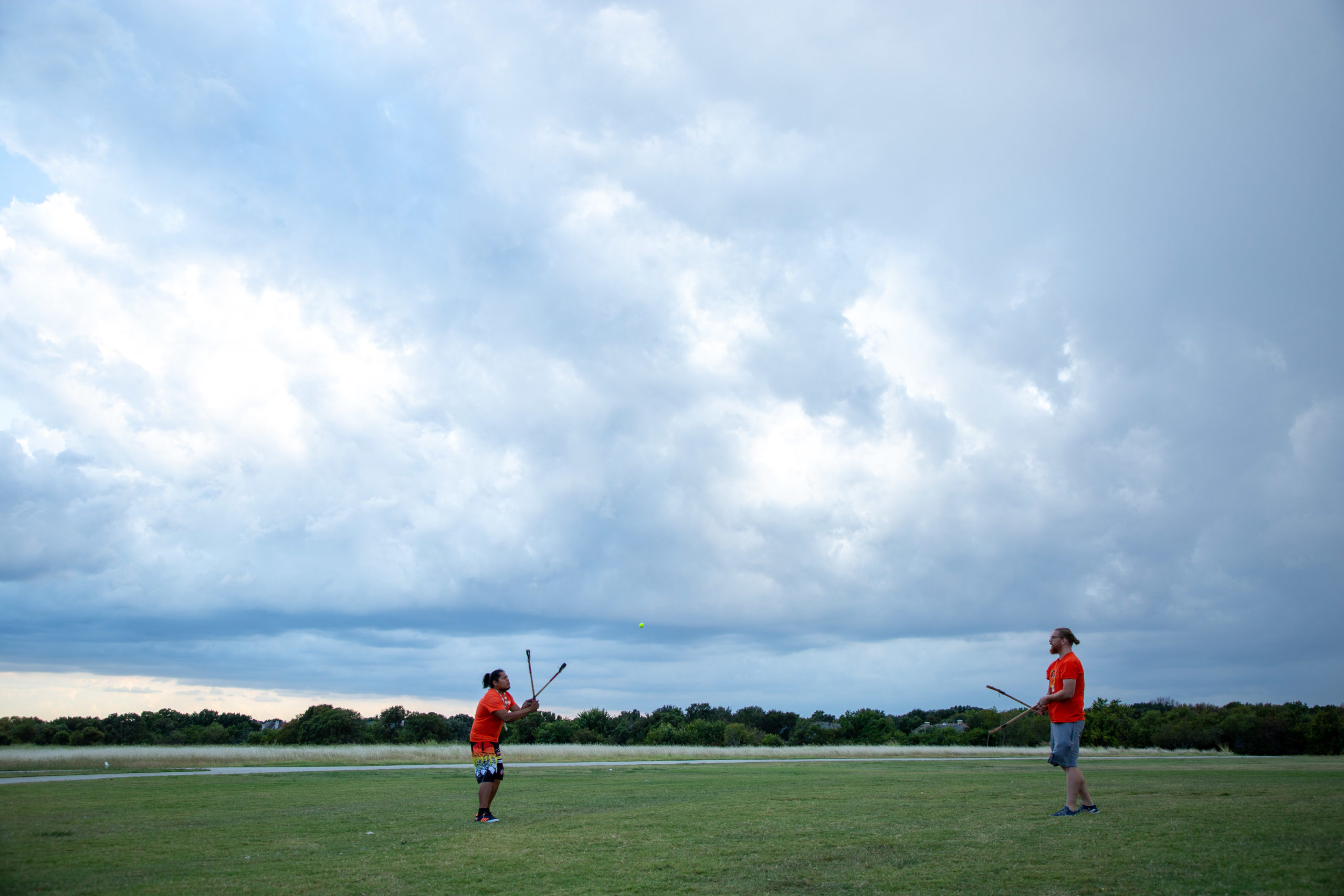
Eli Hickman, Choctaw/Navajo (left), and Brad Luyt (right), play a game of stickball, a sport played by many Indigenous communities. Hickman is the founder of DFW Kabutcha Toli and has played with a group in the Oak Cliff neighborhood of Dallas for 19 years.
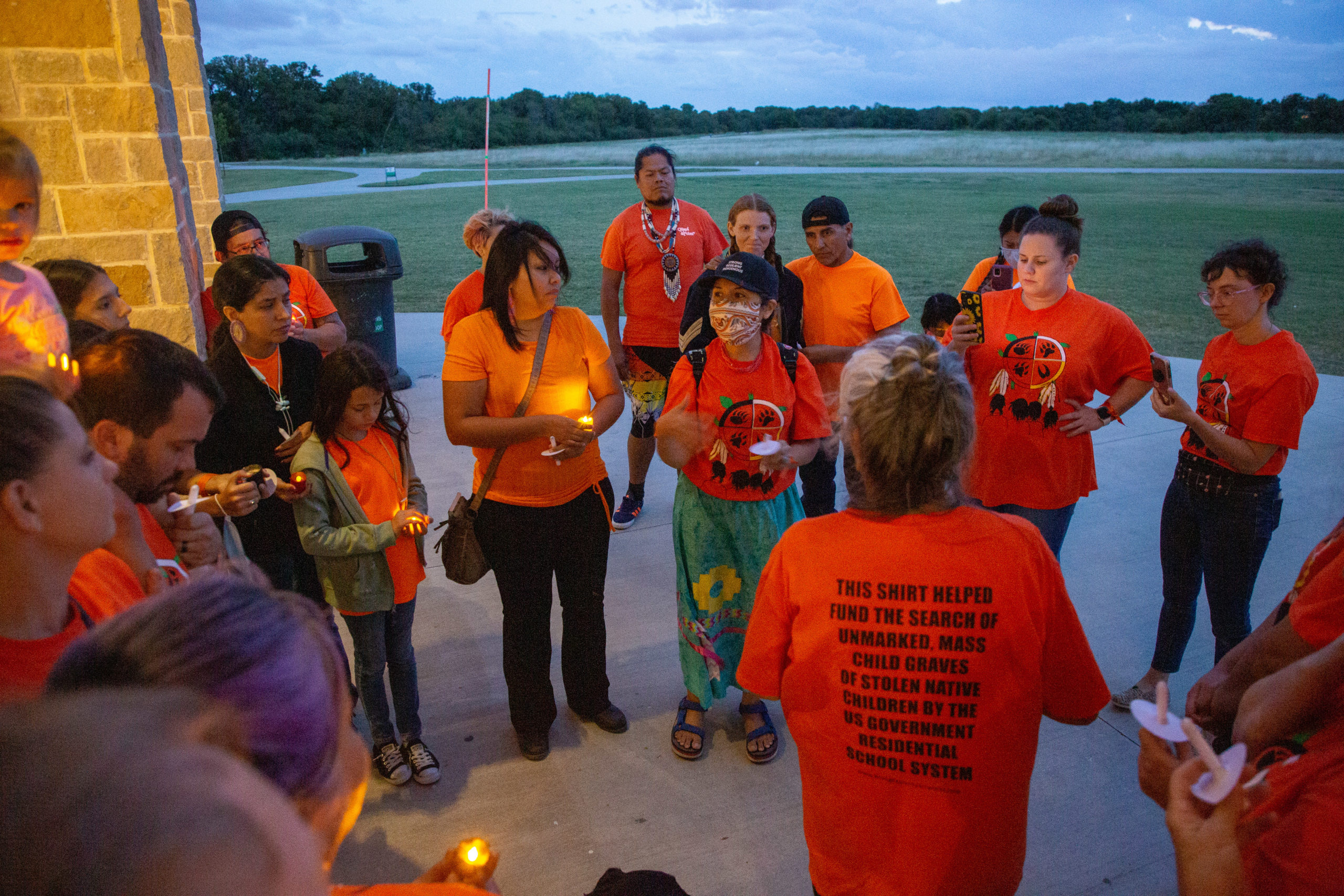
Attendees wore orange ribbons to remember the victims of the United States and Canadian boarding school systems. “We are still here, we’re survivors,” Donna Huaman-Castillo, Inka/Quechua, 54, tells the small crowd at the Windhaven Meadows Park in Plano.
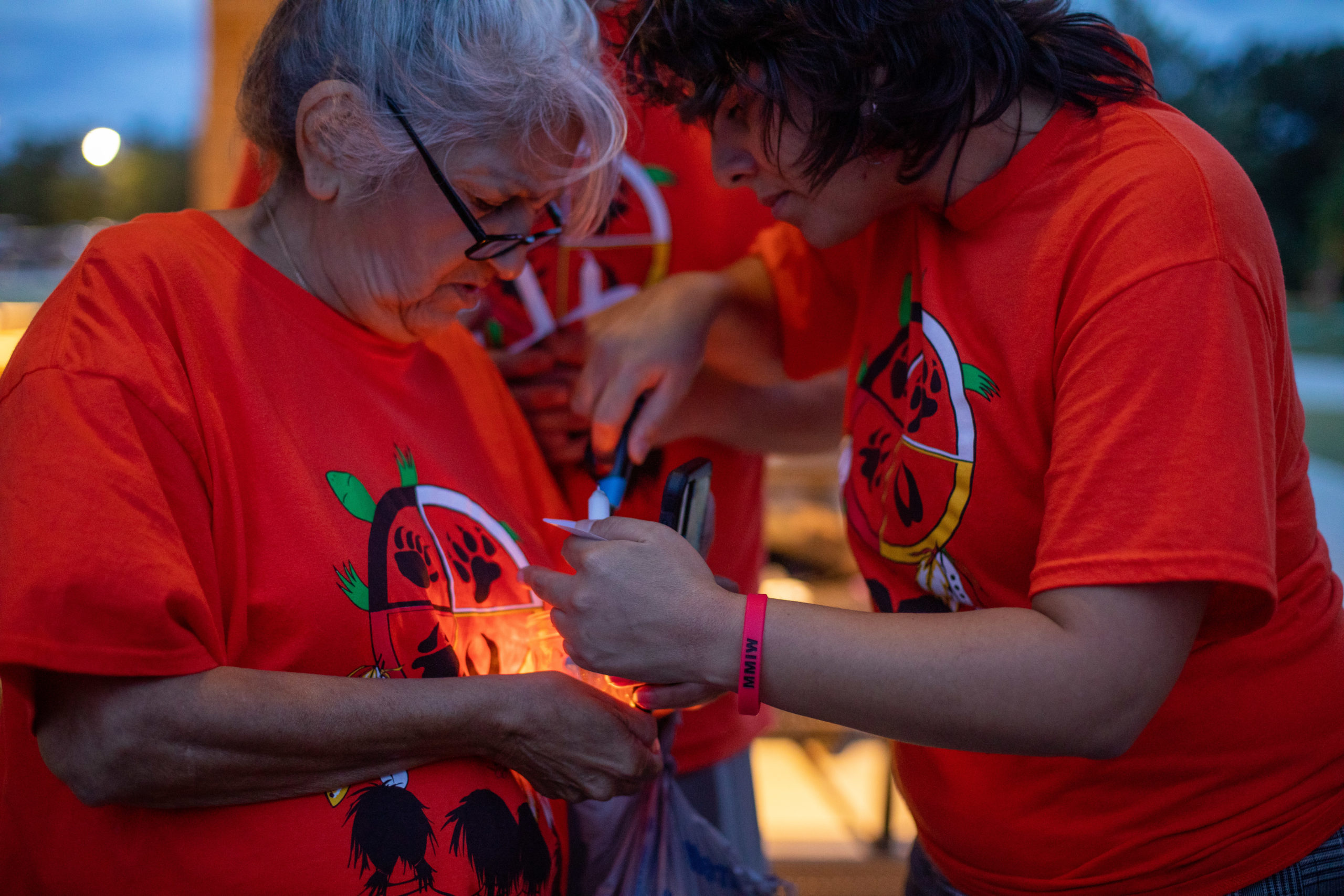
Neilofar Bigmoradi, Lakota, 33, lights her mother’s candle at Thursday’s vigil. Her mother, Behnaz Bigmoradi, 70, who also goes by the name, Brought Plenty, is one of the survivors of the U.S. boarding school system.
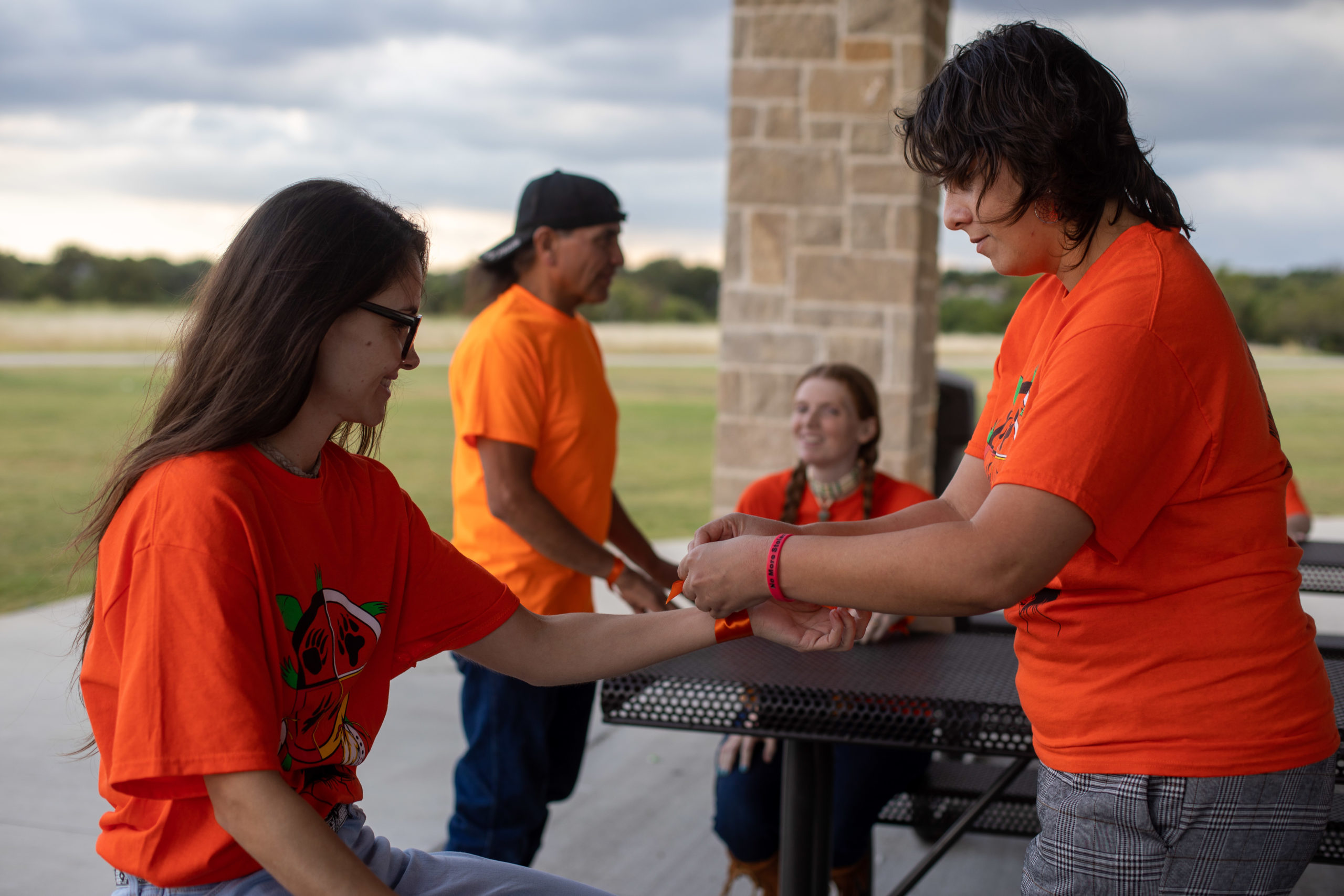
Neilofar Bigmoradi ties an orange ribbon around an attendee’s wrist to remember boarding school victims.
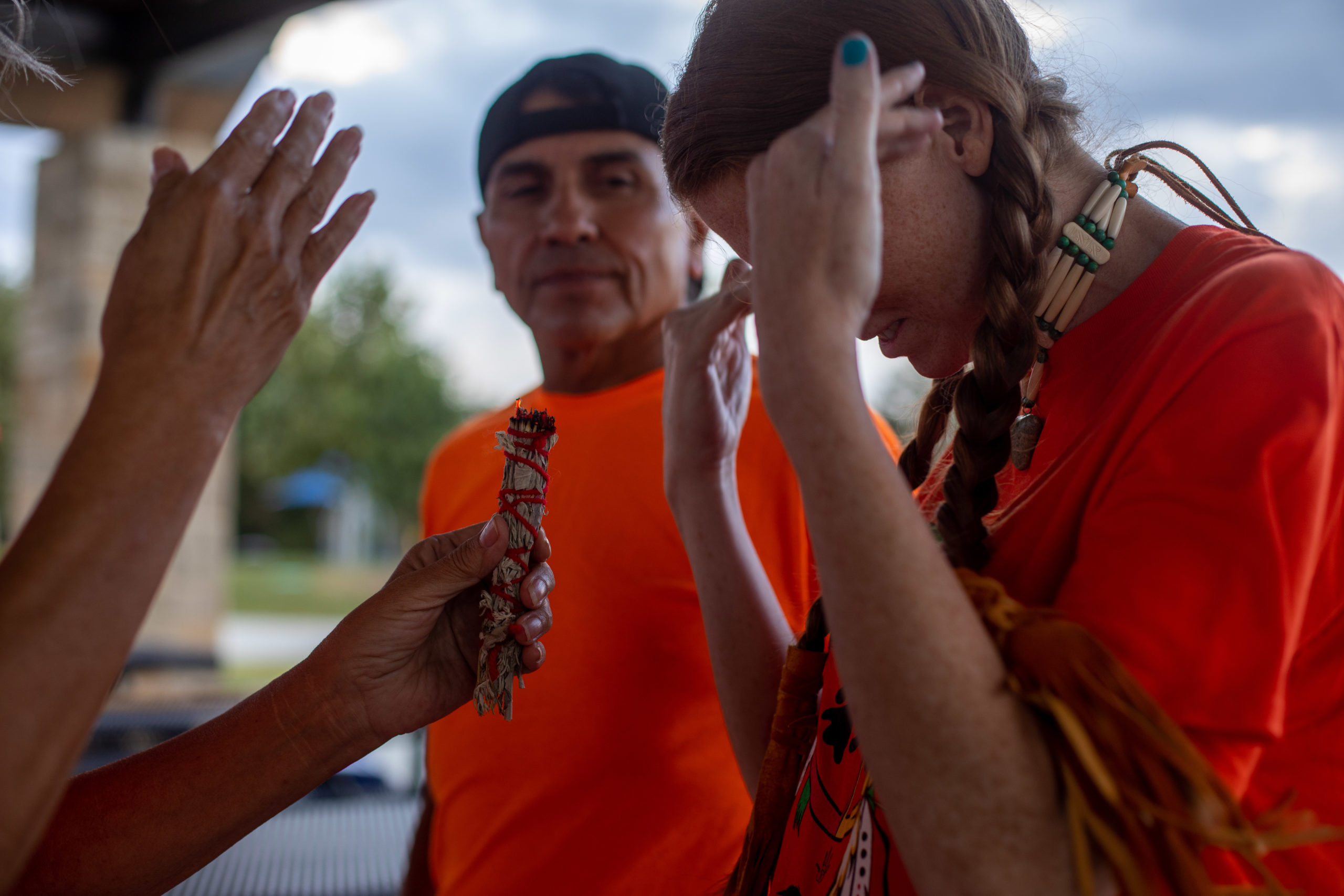
Brought Plenty, a survivor of the U.S. boarding school system, begins the vigil by burning sage. Ashley Arellano, Choctaw, Chickasaw, Cherokee, pushes the smoke toward her.
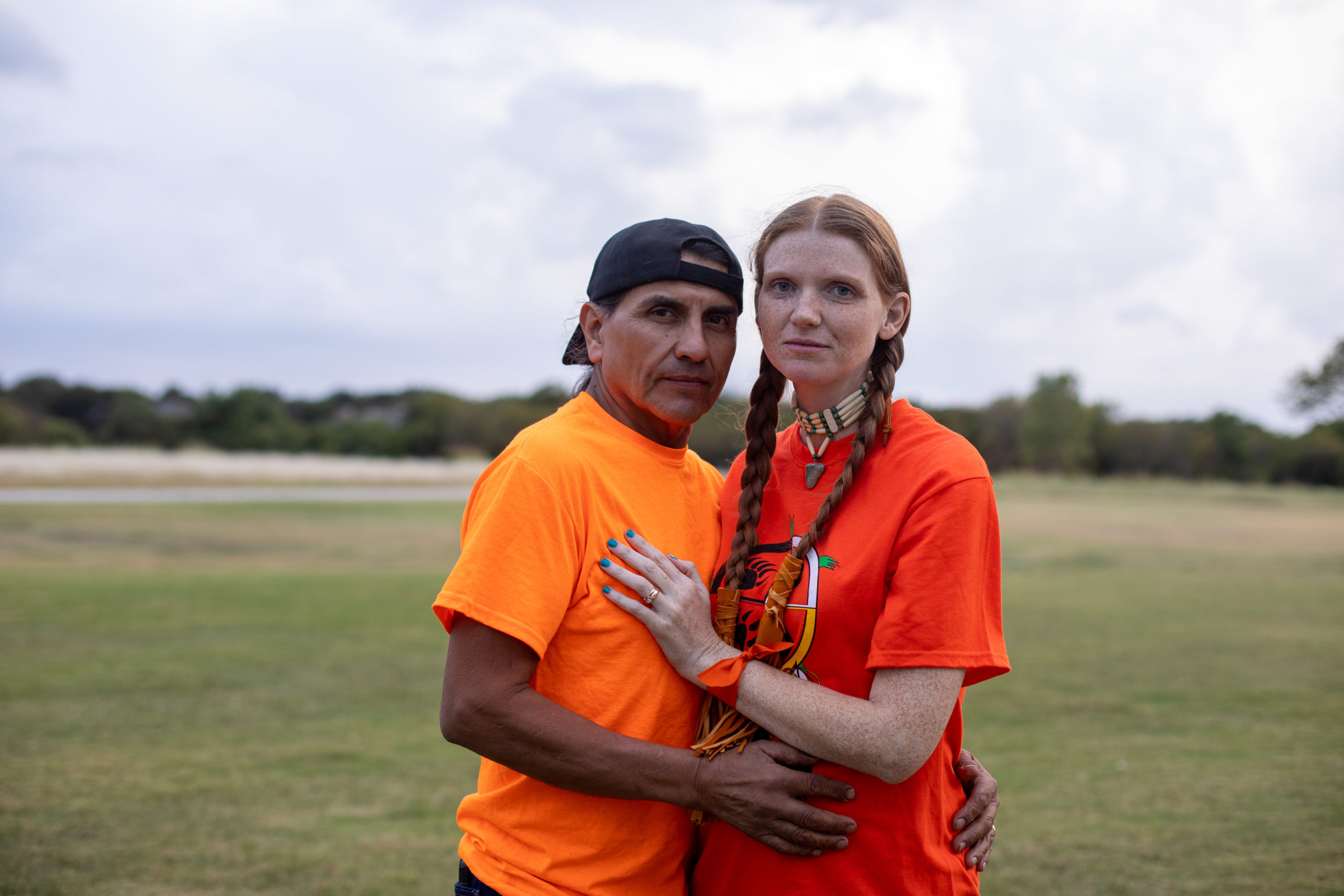
Frank and Ashley Arellano attended Thursday’s vigil to support their community and felt it was important to be there.
“I hurt too whenever I hear stories like this,” Ashley said of the remains of children found at a Canada residential school site. “It makes me cry whenever I hear of Native Americans being murdered because they’re a part of my family too.”
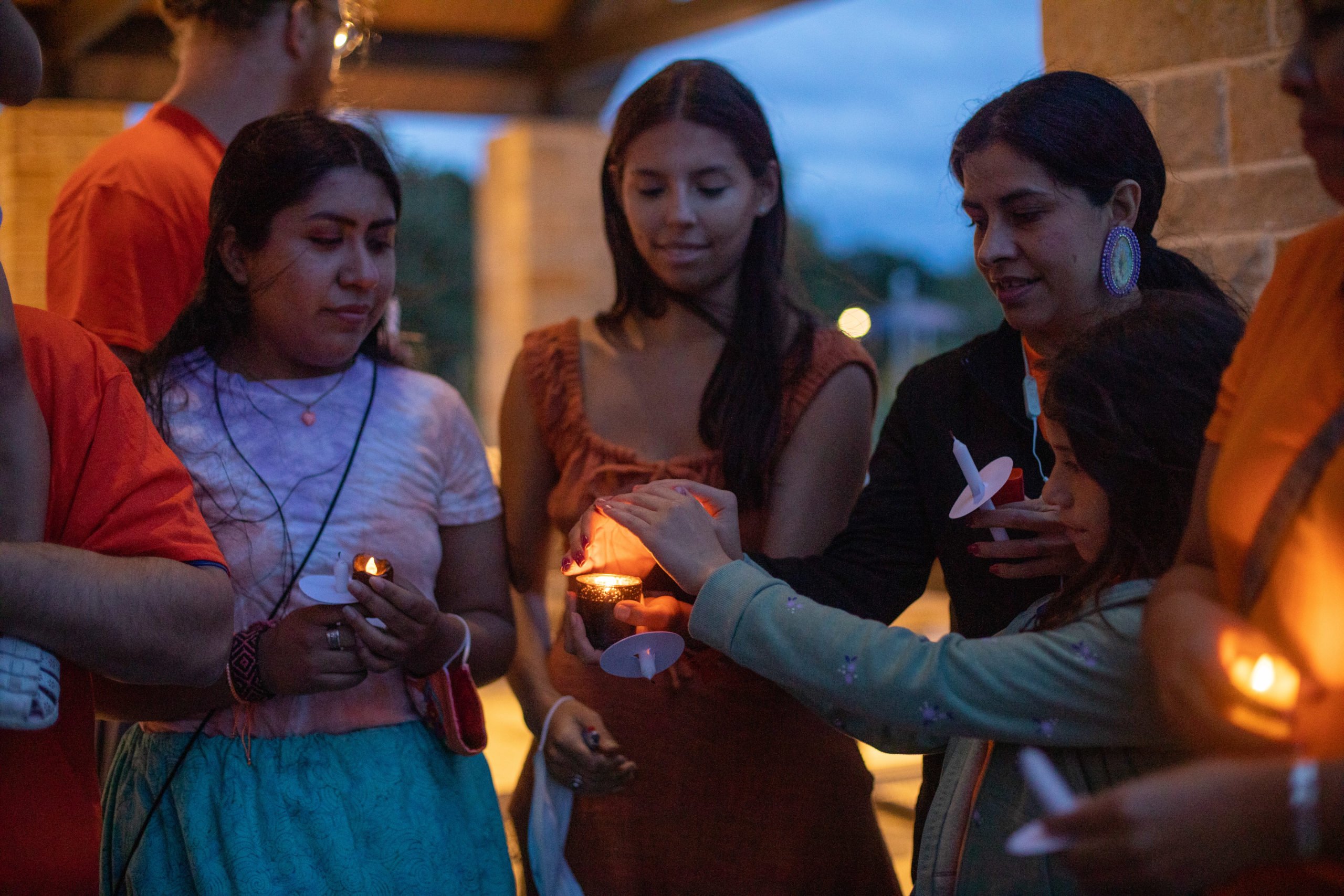
People try to keep the candles lit on the windy night in Plano.
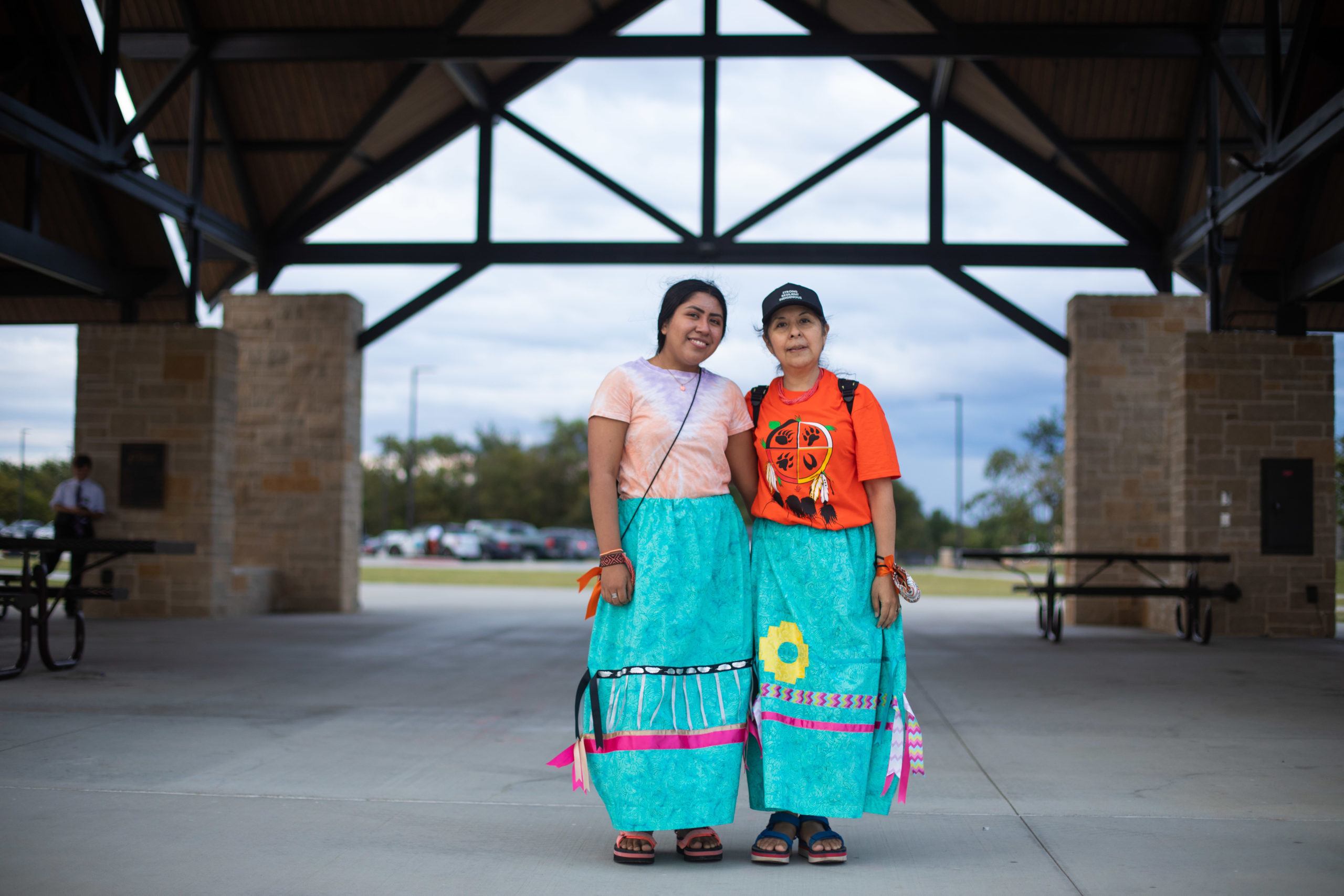
Donna Huaman-Castillo, 54, and her daughter, Cipriana Castillo, 19, were one of the organizers of Thursday’s vigil in Plano. They are descendants of the last Inkas, from Cuzco, Peru, and still speak their native language of Quechua.
“It’s so important to have people in Collin County know about Indigenous issues,” Huaman-Castillo said. “We’re not relegated to museums or textbooks, we’re still here.”
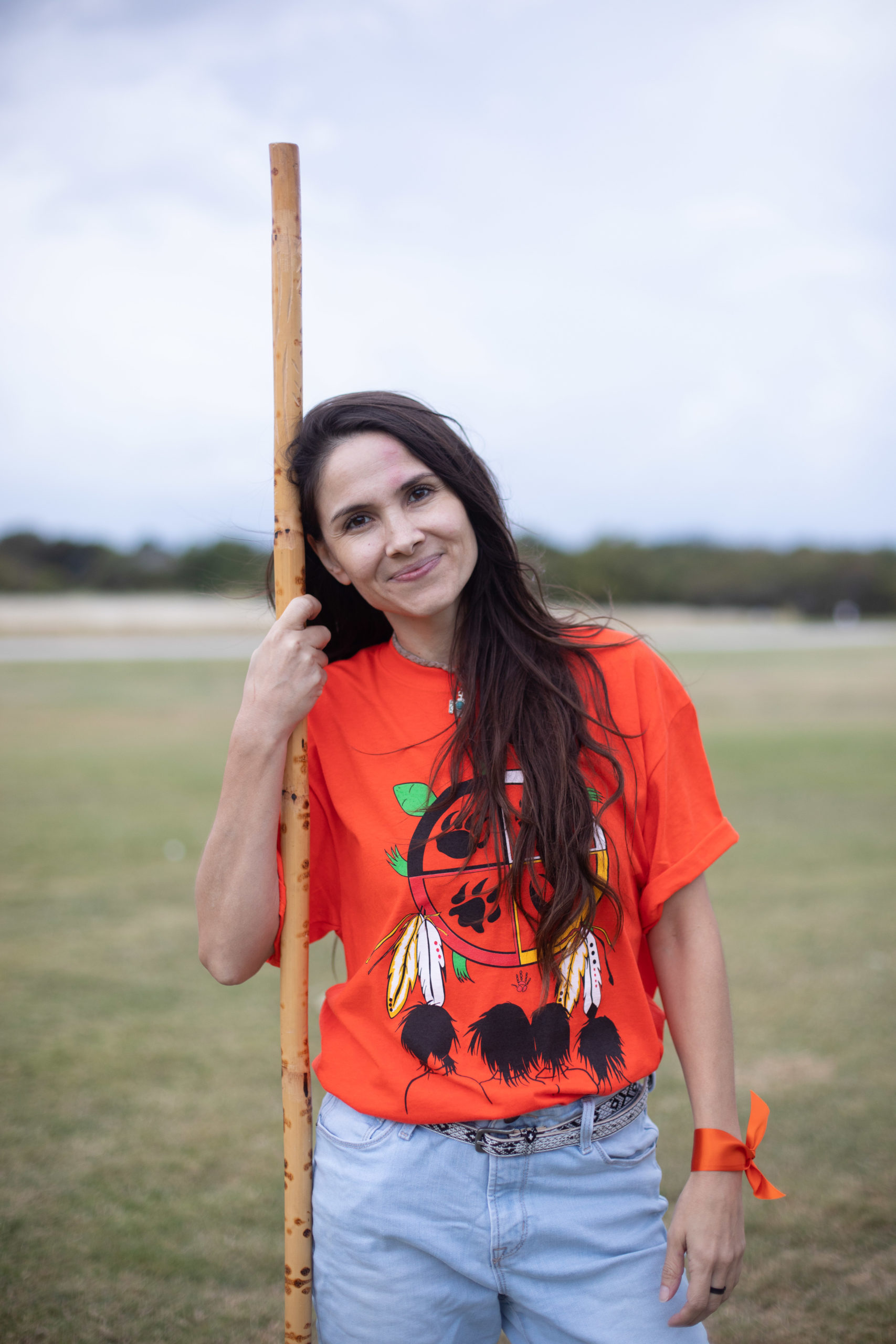
Raquel Zamora, 37, says her family was displaced two generations ago after the Mexican government tried to impose taxes on the native community in Sonora. Zamora wants to reconnect with her ancestors and has been teaching herself native self-defense with her bow staff.
